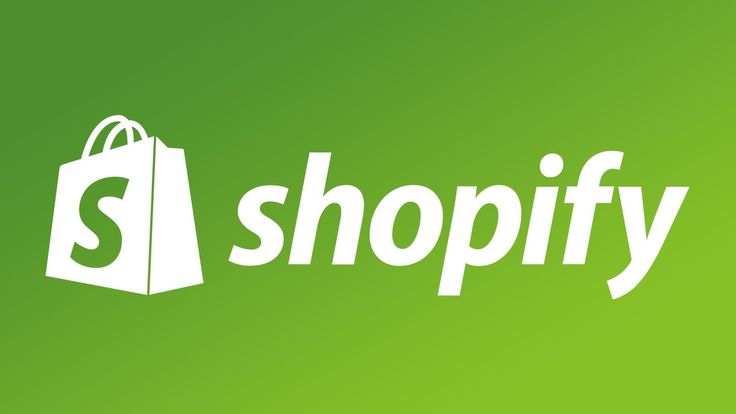1 Apr, 2024 • 9 min read
How To Enable Browser Push Notifications on Shopify Store

In today’s fast-paced digital world, staying connected with your customers is vital for the success of your e-commerce journey. One powerful tool that has emerged as a game-changer for online stores, especially for those running on Shopify, is browser push notifications. These quick, direct messages can significantly boost your store’s engagement and conversion rates. By leveraging browser push notifications, you’re not just keeping your customers updated; you’re also creating an avenue for increased sales and loyalty. Imagine sending out a flash sale notification and seeing an immediate spike in visits and purchases on your Shopify store. That’s the power of push notifications in the realm of e-commerce. Let’s dive into how you can enable these notifications on your Shopify store and start reaping the benefits today.
Contents
Understanding Browser Push Notifications
Browser push notifications are short messages sent from a website to the user’s web browser, even when the website is not open. In the world of e-commerce, these notifications play a crucial role. They can be about sales, new product arrivals, or updates on an order’s status. The idea is to keep customers informed and engaged without overwhelming them. There are different types of notifications, such as promotional messages, reminders for abandoned carts, and transactional updates, each enhancing the customer experience in its own way. By using browser push notifications, e-commerce businesses can stay connected with their customers, encouraging them to return to the store, which ultimately boosts sales and customer satisfaction.
Benefits of Push Notifications for Shopify Stores
For Shopify stores, push notifications bring a bundle of benefits. Firstly, they significantly help in keeping customers coming back, which is known as customer retention. Secondly, these notifications have a proven track record of increasing conversion rates, meaning more visitors to the store end up making purchases. Lastly, they open up opportunities for personalized marketing. By sending out messages based on user behavior and preferences, Shopify store owners can create a more personalized shopping experience. This not only makes the marketing efforts more effective but also enhances the overall shopping experience for the customer.
How to Enable Push Notifications on Shopify
To enable push notifications on Shopify, it’s crucial to pick the method that works best for your store. Push notifications are little messages that pop up on your customers’ devices, letting them know about sales, new products, or other important updates. Shopify, a popular platform for online stores, supports these notifications. Choosing the right way to set them up can really help you connect with your customers and boost your sales.
Using Feedify Push Notification App
If you’re looking to add push notifications to your Shopify store without too much hassle, the Feedify push notification app is a great option. Here’s how to get it set up:
- Visit the Shopify App Store: Start by going to the Shopify App Store and search for the “Feedify push notification app.”
- Install the App: Find the app in the search results and click on it. Then, click the “Add app” button to install it on your Shopify store.
- Configure the App: After installation, you’ll be taken to the app’s settings page on your Shopify dashboard. Here, you can configure the settings according to your preferences. You can choose when the notifications should appear, what they should say, and how often they should be sent out.
- Design Your Notifications: The app allows you to design how your notifications will look. You can add images, choose colors that match your brand, and write your own message.
- Test and Launch: Before going live, test the push notifications to make sure they look and work as expected. Once you’re happy with them, you’re all set to launch. Your customers will start receiving notifications directly on their devices.
Manual Installation Without an App
For those who prefer a more hands-on approach, adding push notifications manually to your Shopify store is possible but requires a bit more technical know-how. Here’s a guide to help you through the process:
- Access Your Shopify Admin Panel: Log in to your Shopify store’s admin area.
- Edit Your Store’s Code: Navigate to the “Themes” section and click on “Edit code.” Here you’ll need to add specific code snippets to enable push notifications.
- Code Snippets: You’ll typically need to insert the push notification service worker into your Shopify store. This might look something like:
// Example code snippet for adding a service worker
if (‘serviceWorker’ in navigator) {
window.addEventListener(‘load’, function() {
navigator.serviceWorker.register(‘/service-worker.js’).then(function(registration) {
console.log(‘ServiceWorker registration successful with scope: ‘, registration.scope);
}, function(err) {
console.log(‘ServiceWorker registration failed: ‘, err);
});
});
}
- Configure Your Notifications: After adding the service worker, you’ll need to configure your notifications’ timing, appearance, and content directly in your store’s code or through a third-party service.
- Test Your Setup: It’s crucial to thoroughly test your push notifications on different devices and browsers to ensure they work correctly before making them live to your customers.
Through either method, enabling push notifications on Shopify can significantly enhance the way you engage with your customers. Whether you choose the simplicity and ease of an app like Feedify or the customization and control of a manual installation, the key is to ensure your notifications are timely, relevant, and valuable to your audience.
Optimizing Push Notifications for Maximum Engagement
When it comes to boosting engagement through push notifications, timing, personalization, and A/B testing are your best tools. First, sending push notifications at the right time can hugely impact how many people will interact with them. Think about when your users are most likely to be free and checking their devices. Next, personalization is key. Using information like a person’s name or their interests makes the notification feel more tailored to them, which can catch their attention better. Finally, A/B testing is a method where you send two versions of the same notification to see which one performs better. This trial and error approach helps in refining your strategy for better engagement. By focusing on these aspects, push notifications can become a powerful way to keep users interested and active.

Crafting the Perfect Push Notification Message
Writing effective push notification copy requires creativity and a clear understanding of what drives your audience to take action. A good push notification should be concise and to the point, delivering a message that is easy to understand at a glance. Use powerful and action-oriented words to grab attention and spark curiosity or excitement. Remember, the goal is to make the reader want to know more or take a specific action, so every word counts. By focusing on crafting compelling copy, push notifications can become a significant asset in your engagement strategy, encouraging more interactions and interest from your audience.
Troubleshooting Common Issues
Troubleshooting common issues with push notifications on Shopify can seem daunting at first, but it’s usually a matter of tackling a few common problems. If you’re setting up or running push notifications and things aren’t going smoothly, don’t worry. First, ensure that your Shopify store’s push notification feature is correctly enabled and configured. Sometimes, the issue is as simple as a toggled-off setting. Another common problem involves customers not receiving notifications. This can often be fixed by checking that the messages aren’t being blocked by browser settings or that the customer has agreed to receive notifications from your site. Lastly, make sure your notification messages are clear and enticing enough to prompt action. By addressing these common issues, you’ll be well on your way to effectively using push notifications to engage with your Shopify store visitors.
Leveraging Push Notifications for Shopify Success
Harnessing the power of push notifications can indeed pave the way for significant Shopify success. With their strategic value undeniable, these prompts serve as a direct link to your customers, encouraging engagement and fostering sales like never before. It’s essential not to view this as a one-and-done strategy but as an ongoing experiment. Continuously optimizing your push notification efforts can transform them into a cornerstone of your Shopify store’s success strategy. Let this be a call to action: start experimenting with push notifications today, and watch as your Shopify store reaches new heights of success.
FAQs
What are browser push notifications, and why are they important for Shopify stores?
Browser push notifications are messages sent from a website to the visitor’s browser, appearing as alerts or pop-up messages. For Shopify stores, they’re essential because they help in keeping customers informed about new products, sales, and updates, directly increasing engagement and potentially boosting sales.
How can I enable push notifications on my Shopify store using an app?
To enable push notifications on your Shopify store using an app, simply head to the Shopify App Store, search for a push notification app that suits your needs, install it, and follow the setup instructions provided by the app. It’s a straightforward process.
Is it possible to set up push notifications on Shopify without an app?
Yes, setting up push notifications on Shopify without an app is possible but requires more technical knowledge. You’d need to integrate a push notification service directly into your Shopify store’s code. This might involve coding or working with web development tools.
How can I optimize my push notifications for higher engagement rates?
To optimize your push notifications for higher engagement rates, focus on creating personalized, timely, and relevant messages. Also, make sure your notifications have compelling calls-to-action (CTAs) and avoid sending too many notifications to prevent annoying your subscribers.
What are some common issues when setting up push notifications on Shopify and their solutions?
Common issues when setting up push notifications on Shopify:
- Inconsistent Delivery: Ensure your push notification service provider has a good reputation for reliability.
- Low Engagement Rates: Focus on personalization and timing to make your notifications more relevant.
- Technical Integration Issues: If using an app, ensure it’s compatible with your Shopify theme. For custom integrations, double-check your code or consult with a developer.

Ankur
Ankur, with over 20 years of expertise, simplifies the complex world of online marketing to boost your conversion rates. He shares actionable insights that anyone can apply to see immediate results. Trust Ankur to guide you through proven strategies that enhance your online presence and profitability.
Related Blogs

By Ankur • 12 min read
Top Shopify Push Notifications Apps for 2024
Push notifications are like little taps on the shoulder for your online customers. When you run a Shopify store, these notifications can tell your visitors...

